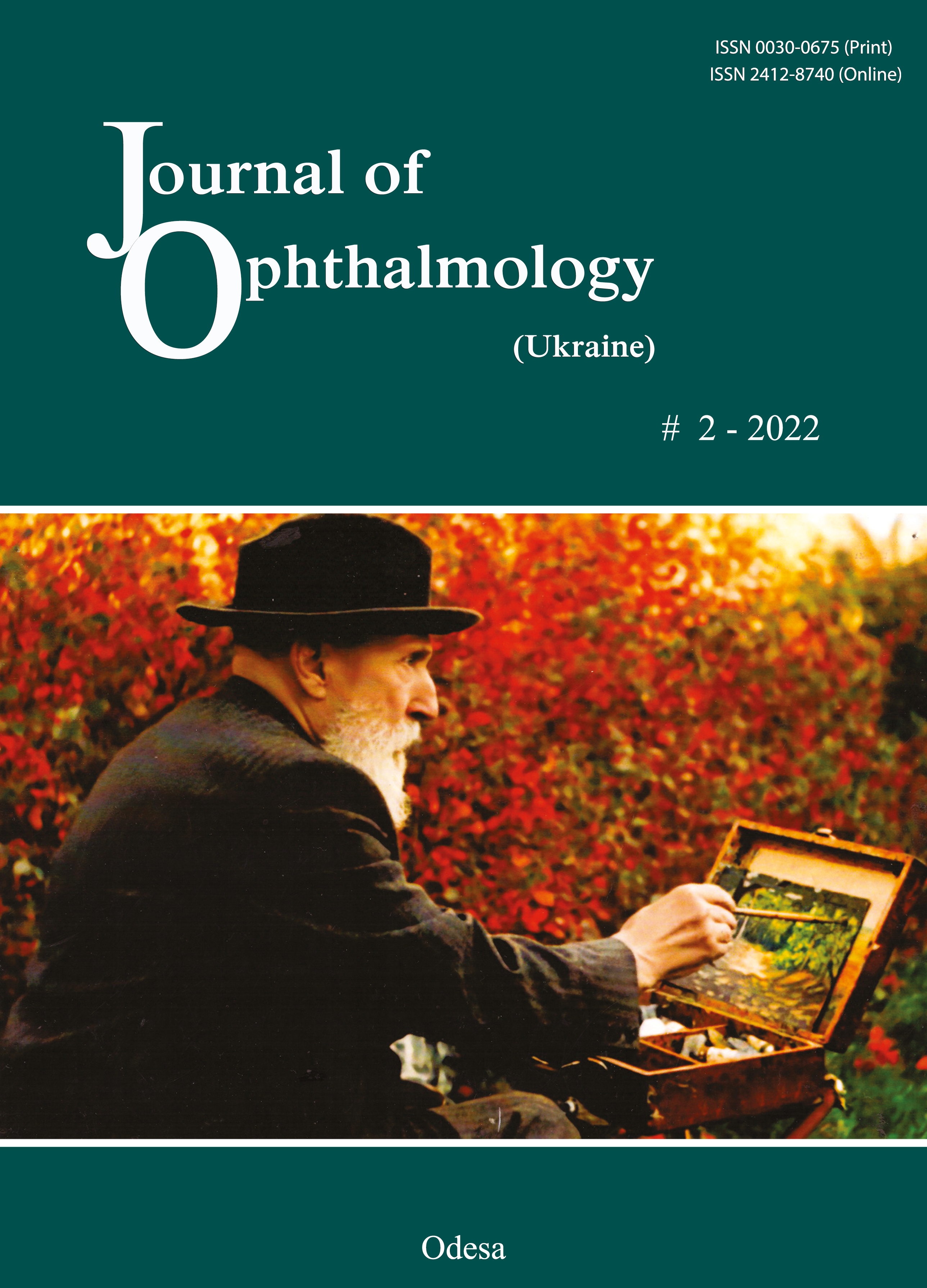Primary mesodermal dysgenesis of the cornea (Peter´s anomaly)
DOI:
https://doi.org/10.31288/oftalmolzh202226567Keywords:
сongenital, Peter´s аnomaly, leucoma, cataractAbstract
Primary mesodermal dysgenesis of the cornea, also known as Peter´s anomaly (PA) or keratolenticular dysgenesis, is a rare congenital eye condition caused by an abnormal development of the anterior segment. PA is characterized by unilateral or bilateral corneal opacity (leucoma), that appears since the early neonatal period. The incidence of PA in the United States of America is approximately 1.5 per 100,000 live births. PA is known as Peters-plus syndrome when it presents with systemic malformations. In this article we describe the clinical presentation of an 18-year-old patient with PA that arrived to medical consultation due to bilateral corneal opacities since birth. The patient´s parents refer that he has hypoacusis and deny other systemic pathologies. Clinical exploration reveals a visual acuity of 20/30 of the right eye and 20/100 of the left eye. According to the clinical findings and the absence of systemic anomalies, the patient was diagnosed with PA type II.
References
1.Brobova N, Romanova T, Tronina SA. Successful Two-Stage Rehabilitation of The Ectodermal form of Peters Anomaly in Frakcaro-Schmid Syndrome. Ukr J Ophthalmol. 2011;6:49-52. https://doi.org/10.31288/oftalmolzh201164952
2.Demir GÜ, Lafcı NG, Doğan ÖA, Kiper PÖŞ, Utine GE. Peters plus syndrome: A recognizable clinical entity. Turk J Pediatr. 2020;62(1):136-40. https://doi.org/10.24953/turkjped.2020.01.020
3.Elbaz U, Strungaru H, Mireskandari K, Stephens D, Ali A. Long-Term Visual Outcomes and Clinical Course of Patients With Peters Anomaly. Cornea. 2020;00(00):1-9.
4.Faber H, Puk O, Holz A, Biskup S, Voykov B. Identification of a New Genetic Mutation Associated With Peters Anomaly. Cornea. 2020;00(00):1-4.
5.Karadag R, Rapuano CJ, Hammersmith KM, Nagra PK. Causes of congenital corneal opacities and their management in a tertiary care center. Arq Bras Oftalmol. 2020;83(2):98-102. https://doi.org/10.5935/0004-2749.20200023
6.Kurilec JM, Zaidman GW. Incidence of peters anomaly and congenital corneal opacities interfering with vision in the united states. Cornea. 2014;33(8):848-50. https://doi.org/10.1097/ICO.0000000000000182
7.Li Y, Zhang J, Dai Y, Fan Y, Xu J. Novel Mutations in COL6A3 That Associated With Peters' Anomaly Caused Abnormal Intracellular Protein Retention and Decreased Cellular Resistance to Oxidative Stress. Front Cell Dev Biol. 2020;8(November):1-13. https://doi.org/10.3389/fcell.2020.531986
8.Samara A, Eldaya RW. Ocular and brain imaging findings in Peters' anomaly: A case report and literature review. Radiol Case Reports. 2020;15(7):863-6. https://doi.org/10.1016/j.radcr.2020.04.011
9.Walkden A, Au L. Iridocorneal endothelial syndrome: Clinical perspectives. Clin Ophthalmol. 2018;12:657-64. https://doi.org/10.2147/OPTH.S143132
10.Weigele J, Bohnsack BL. Genetics underlying the interactions between neural crest cells and eye development. J Dev Biol. 2020;8(4):1-24. https://doi.org/10.3390/jdb8040026
Downloads
Published
How to Cite
Issue
Section
License
Copyright (c) 2025 Leopoldo Garduño Vieyra, Raúl Rúa Martínez, Francisco Javier Rodríguez Hernández, Isabel De la Fuente Batta

This work is licensed under a Creative Commons Attribution 4.0 International License.
This work is licensed under a Creative Commons Attribution 4.0 International (CC BY 4.0) that allows users to read, download, copy, distribute, print, search, or link to the full texts of the articles, or use them for any other lawful purpose, without asking prior permission from the publisher or the author as long as they cite the source.
COPYRIGHT NOTICE
Authors who publish in this journal agree to the following terms:
- Authors hold copyright immediately after publication of their works and retain publishing rights without any restrictions.
- The copyright commencement date complies the publication date of the issue, where the article is included in.
DEPOSIT POLICY
- Authors are permitted and encouraged to post their work online (e.g., in institutional repositories or on their website) during the editorial process, as it can lead to productive exchanges, as well as earlier and greater citation of published work.
- Authors are able to enter into separate, additional contractual arrangements for the non-exclusive distribution of the journal's published version of the work with an acknowledgement of its initial publication in this journal.
- Post-print (post-refereeing manuscript version) and publisher's PDF-version self-archiving is allowed.
- Archiving the pre-print (pre-refereeing manuscript version) not allowed.












